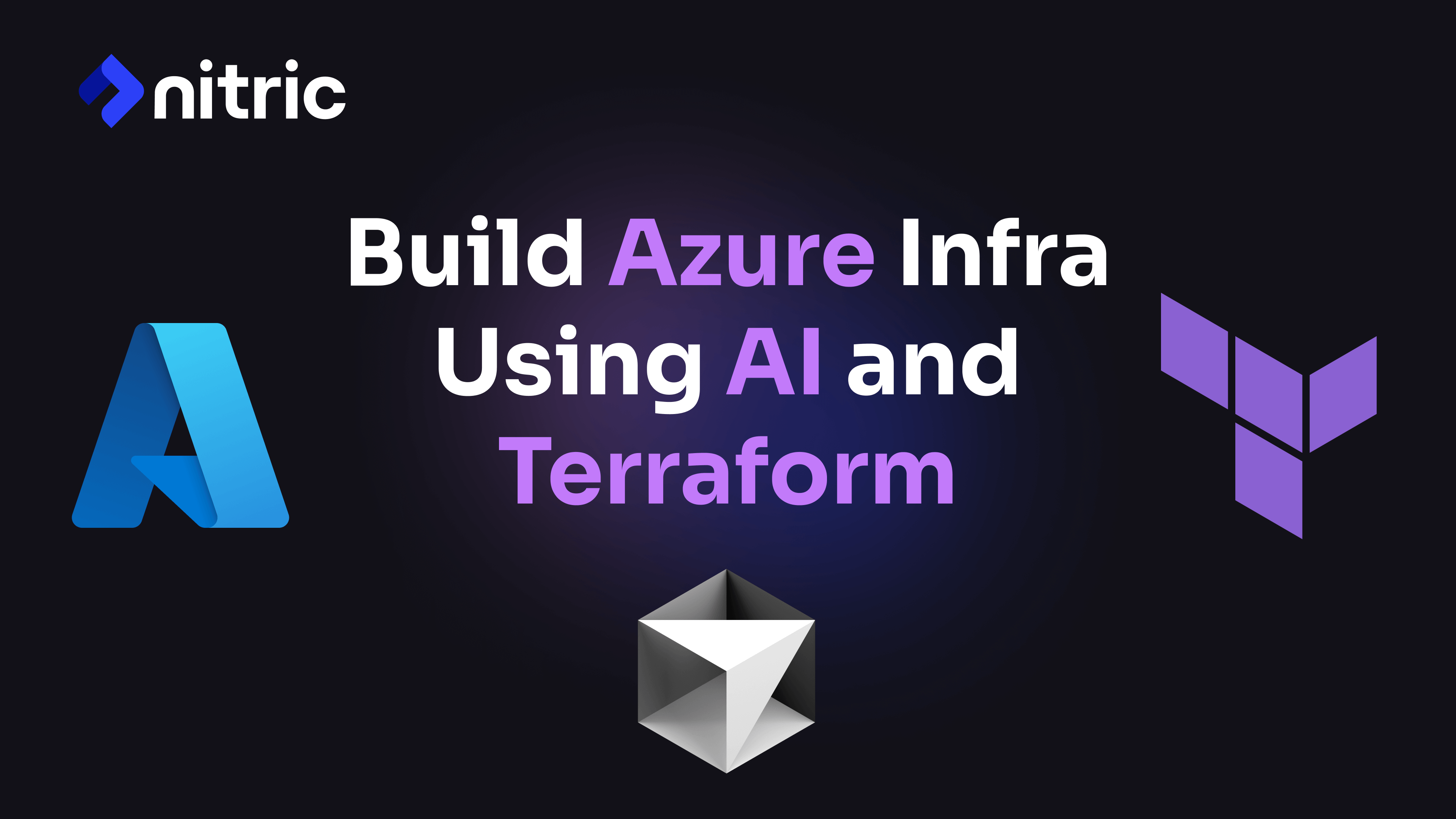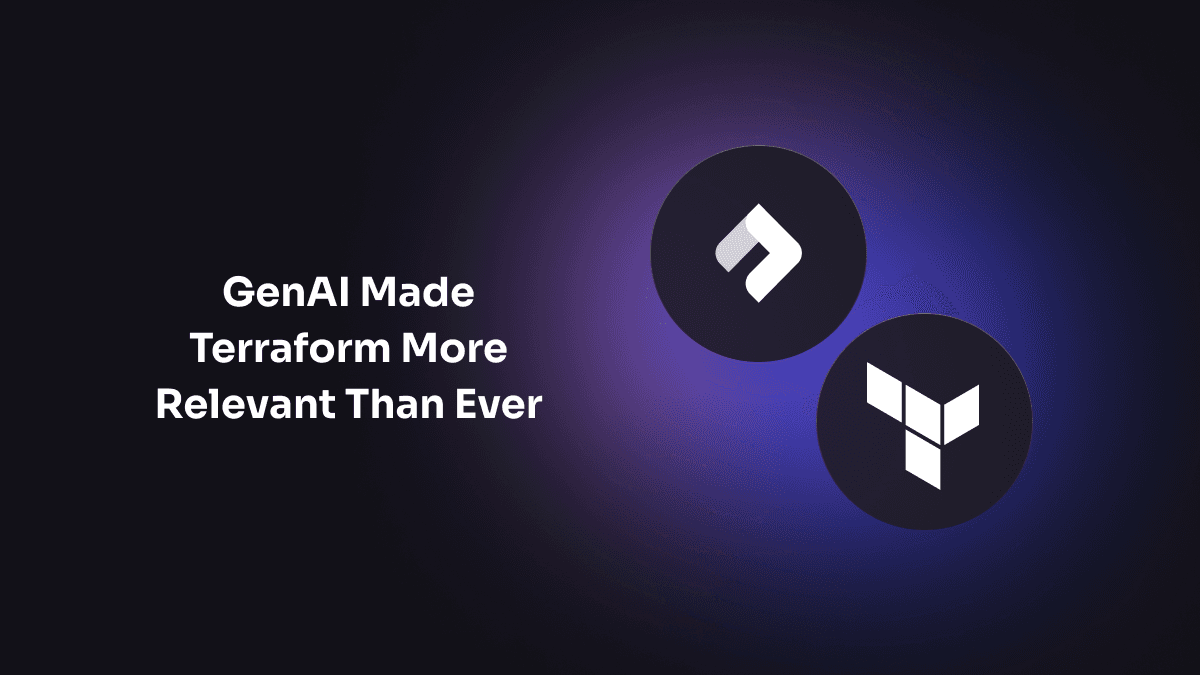Choosing the right Infrastructure as Code (IaC) tool is crucial. In this post, we delve into two popular tools Terraform and Pulumi by deploying the same application to AWS using both, with the help of Nitric. We’ll explore key features, differences, and strengths of each tool to help you make an informed decision.
Prefer a video version? Check it out below:
The setup I used
- All necessary tools installed (Nitric, Docker, Pulumi and Terraform)
- AWS credentials configured locally
- You can find the source code in the main repo here.
Why Use Nitric for This Comparison?
Nitric offers a unique advantage by allowing developers to swap out providers without altering application code. This flexibility ensures a consistent infrastructure across different tools, making it ideal for comparing Terraform and Pulumi. Nitric integrates seamlessly with IaC tools, supporting both with Terraform providers and Pulumi providers natively.
Project Setup
We will create a new app for this comparison called "demo" featuring a storage bucket for files and a photos API with routes that interact with the bucket.
Create the new Nitric project using the Nitric CLI and the nitric new command:
nitric new demo ts-starter
At the time of writing the Terraform providers are in preview, so we need to enable 'beta-providers' in the Nitric project
Add beta-providers to the preview field of the nitric.yaml to enable Terraform:
name: demoservices:- match: services/*.tsstart: npm run dev:services $SERVICE_PATHpreview:- beta-providers
Remove the hello service and create the photos service:
cd demo/servicesrm hello.tstouch photos.ts
Add the application code into the photos.ts file:
import { api, bucket } from '@nitric/sdk'const photosAPI = api('photos')const files = bucket('files').allow('read', 'write')photosAPI.get('/:name', async (ctx) => {const { name } = ctx.req.paramsconst data = await files.file(name).read()ctx.res.body = datactx.res.headers['Content-Type'] = ['image/jpeg']return ctx})photosAPI.post('/:name', async (ctx) => {const { name } = ctx.req.paramsconst data = ctx.req.dataawait files.file(name).write(data)return ctx})
Deploying with Terraform
We create a Nitric stack using the Nitric AWS Terraform provider. This setup generates a Terraform project, allowing deployment using Terraform’s powerful domain-specific language (HCL).
Key Steps:
-
Create a new Nitric stack and set the region
nitric stack new tf aws-tfIn the
nitric.tf.yamlfile add the region:# The nitric provider to useprovider: nitric/awstf@latest# The target aws region to deploy to# See available regions:# https://docs.aws.amazon.com/general/latest/gr/lambda-service.htmlregion: us-east-1 -
Run
nitric upto generate a Terraform stackThis command will synthesize your app code into a Terraform stack
nitric up -s tfYou will see a new directory called
cdktf.outcontaining all the Terraform modules and assets required to deploy your app. -
Initialize and Plan
Navigate into
cdktf.outand useterraform initto set up the configuration andterraform planto review resources.cd cdktf.out/stacks/demo-tf/terraform initterraform plan -
Deploy
Execute
terraform applyto deploy the infrastructure.terraform applyThe output of running the command will look something like this:
Terraform used the selected providers to generate the following execution plan. Resource actions areindicated with the following symbols:+ createTerraform will perform the following actions:# module.api_photos.aws_apigatewayv2_api.api_gateway will be created+ resource "aws_apigatewayv2_api" "api_gateway" {...}# module.api_photos.aws_apigatewayv2_stage.stage will be created+ resource "aws_apigatewayv2_stage" "stage" {...}# module.api_photos.aws_lambda_permission.apigw_lambda["demo_services-photos"] will be created+ resource "aws_lambda_permission" "apigw_lambda" {...}# module.bucket_files.aws_s3_bucket.bucket will be created+ resource "aws_s3_bucket" "bucket" {...}# module.policy_72c769e2d65d0a4787e80f72424f011d.aws_iam_role_policy.policy["demo_services-photos:Service"] will be created+ resource "aws_iam_role_policy" "policy" {...}# module.service_demo_services-photos.aws_ecr_repository.repo will be created+ resource "aws_ecr_repository" "repo" {...}# module.service_demo_services-photos.aws_iam_role.role will be created+ resource "aws_iam_role" "role" {...}# module.service_demo_services-photos.aws_iam_role_policy.resource-list-access will be created+ resource "aws_iam_role_policy" "resource-list-access" {...}# module.service_demo_services-photos.aws_iam_role_policy_attachment.basic-execution will be created+ resource "aws_iam_role_policy_attachment" "basic-execution" {...}# module.service_demo_services-photos.aws_lambda_function.function will be created+ resource "aws_lambda_function" "function" {...}# module.service_demo_services-photos.docker_registry_image.push will be created+ resource "docker_registry_image" "push" {...}# module.service_demo_services-photos.docker_tag.tag will be created+ resource "docker_tag" "tag" {...}# module.stack.aws_resourcegroups_group.group will be created+ resource "aws_resourcegroups_group" "group" {...}Plan: 16 to add, 0 to change, 0 to destroy.module.bucket_files.random_id.bucket_id: Creating...module.bucket_files.random_id.bucket_id: Creation complete after 0s [id=hhXj9oSxc8U]module.service_demo_services-photos.aws_ecr_repository.repo: Creating...module.stack.aws_resourcegroups_group.group: Creating...module.service_demo_services-photos.aws_iam_role.role: Creating...module.bucket_files.aws_s3_bucket.bucket: Creating...module.service_demo_services-photos.aws_ecr_repository.repo: Creation complete after 1s [id=demo_services-photos]module.service_demo_services-photos.docker_tag.tag: Creating...module.service_demo_services-photos.docker_tag.tag: Creation complete after 0s [id=sha256:88b9684bdd8f616a6e6b5bc40153bcb713a14e3172b7420b28b04fe63d208cd1.772593474159.dkr.ecr.us-east-1.amazonaws.com/demo_services-photos]module.service_demo_services-photos.docker_registry_image.push: Creating...module.service_demo_services-photos.aws_iam_role.role: Creation complete after 1s [id=demo_services-photos]module.service_demo_services-photos.aws_iam_role_policy_attachment.basic-execution: Creating...module.service_demo_services-photos.aws_iam_role_policy.resource-list-access: Creating...module.stack.aws_resourcegroups_group.group: Creation complete after 1s [id=nitric-resource-group-uv2cull9]module.service_demo_services-photos.aws_iam_role_policy_attachment.basic-execution: Creation complete after 1s [id=demo_services-photos-20240725071034549800000001]module.service_demo_services-photos.aws_iam_role_policy.resource-list-access: Creation complete after 1s [id=demo_services-photos:resource-list-access]module.bucket_files.aws_s3_bucket.bucket: Creation complete after 5s [id=files-8615e3f684b173c5]module.service_demo_services-photos.docker_registry_image.push: Creation complete after 58s [id=sha256:50976d812d17751f8e96989ad408cc14e3c431ef012be296ecbaaf38d9ea3c30]module.service_demo_services-photos.aws_lambda_function.function: Creating...module.service_demo_services-photos.aws_lambda_function.function: Creation complete after 12s [id=demo_services-photos-uv2cull9]module.api_photos.aws_apigatewayv2_api.api_gateway: Creating...module.api_photos.aws_apigatewayv2_api.api_gateway: Creation complete after 4s [id=j3j5pua60m]module.api_photos.aws_lambda_permission.apigw_lambda["demo_services-photos"]: Creating...module.api_photos.aws_apigatewayv2_stage.stage: Creating...module.api_photos.aws_lambda_permission.apigw_lambda["demo_services-photos"]: Creation complete after 1s [id=terraform-20240725071148144100000003]module.api_photos.aws_apigatewayv2_stage.stage: Creation complete after 1s [id=$default]Apply complete! Resources: 16 added, 0 changed, 0 destroyed.View the deployed cloud resources in the AWS Console.
-
Cleanup
To clean up your stack, run
terraform destroy:terraform destroy
Deploying with Pulumi
Pulumi, a newer player, emphasizes a developer-first experience with support for multiple programming languages. Unlike Terraform’s HCL, Pulumi uses general-purpose languages, making it accessible to a broader audience.
Key Steps:
-
Create a new Nitric stack and set the region
Make sure you are back in the root
demodirectory, then run:nitric stack new pulumi awsin the
nitric.pulumi.yamlfile add the region:# The nitric provider to useprovider: nitric/aws@latest# The target aws region to deploy to# See available regions:# https://docs.aws.amazon.com/general/latest/gr/lambda-service.htmlregion: us-east-1 -
Deploy
Execute
nitric upagainst the Pulumi stack to deploy the infrastructure.Nitric uses Pulumi's SDK in the open-source provider, simplifying the process.
nitric up -s pulumiThe output of running
nitric upwith Pulumi will look something like this:build Building Servicesdemo_services-photos completeup Deploying with nitric/aws@latestStack::pulumi├─urn:pulumi:demo-pulumi::demo::pulumi:pulumi:Stack::demo-demo-pulumi created (2m48s)├─urn:pulumi:demo-pulumi::demo::random:index/randomString:RandomString::demo-pulumi-stack-name created (0s)├─urn:pulumi:demo-pulumi::demo::aws:resourcegroups/group:Group::stack-resource-group created (3s)└─urn:pulumi:demo-pulumi::demo::pulumi:providers:docker::docker-auth-provider created (1s)Service::demo_services-photos├─aws:iam/role:Role::demo_services-photosLambdaRole created (3s)├─aws:ecr/repository:Repository::demo_services-photos created (3s)├─nitriccommon:Image::demo_services-photos created (2m9s)├─aws:iam/rolePolicy:RolePolicy::demo_services-photosListAccess created (1s)├─aws:iam/rolePolicyAttachment:RolePolicyAttachment::demo_services-photosLambdaBasicExecution created (2s)├─docker:index/image:Image::demo_services-photos-image created (2m6s)└─aws:lambda/function:Function::demo_services-photos created (23s)Bucket::files└─aws:s3/bucket:Bucket::files created (6s)Api::photos├─aws:apigatewayv2/api:Api::photos created (4s)├─aws:apigatewayv2/stage:Stage::photosDefaultStage created (2s)└─aws:lambda/permission:Permission::photosdemo_services-photos created (2s)Policy::72c769e2d65d0a4787e80f72424f011d└─aws:iam/rolePolicy:RolePolicy::demo_services-photos-ee092333a297dafc7194c5ab223c261b created (1s)nitric/aws@latest stdout:────────────────────────────────────────────────────────────────────────────────────────────────────Deployment server started on [::]:4000────────────────────────────────────────────────────────────────────────────────────────────────────resultAPI Endpoints:──────────────photos: https://9pus28upk3.execute-api.us-east-1.amazonaws.comView the deployed cloud resources in the AWS Console.
-
Cleanup
To clean up your stack, run
nitric down:nitric down -s pulumi
Comparing Terraform and Pulumi
| Terraform | Pulumi | |
|---|---|---|
| Language | Domain Specific Language called HashiCorp Configuration Language (HCL) | JavaScript, TypeScript, Python, Go, C#, Java, and more |
| Ecosystem | Mature with extensive community support and modules | Growing with open-source model and SDKs |
| State Management | Uses local or remote state with options for encryption | Stores encrypted state in Pulumi Cloud, other cloud services, or manage locally |
| Approach | Declarative | Imperative with a focus on code-first infrastructure |
| Ease of Use | Requires learning HCL | Familiar languages make it easier for developers |
| Extensibility | Strong module system for reusability | Supports custom code and libraries |
| Integration | Integrates well with existing DevOps tools | Smooth integration with development workflows |
| Visualization | Requires additional tools for visualization | Built-in real-time visualization during deployment |
| Licensing | Business Source License | Open-source under Apache License |
When to Choose Terraform
- Proven Track Record: Best for managing traditional infrastructure like VMs and databases due to its reliability.
- Declarative Approach: Terraform's HCL is tailored for infrastructure, making it easy to understand for those with IaC experience.
- Extensive Ecosystem: Offers a vast selection of providers and modules, making it suitable for multi-cloud environments and diverse SaaS integrations.
- Vibrant Community: Benefit from an extensive range of tutorials, courses, and third-party tools, supported by a large, active community.
- Detailed Control: Offers precise management of cloud resources, suitable for intricate deployments.
When to Choose Pulumi
- Language Flexibility: Leverage languages like Python, TypeScript, or Go for more expressive coding, enabling reusable components and modules with familiar constructs.
- Application-Oriented: Well-suited for modern architectures, including containers and serverless, allowing simultaneous deployment of app code and infrastructure.
- Seamless Integration: Utilize existing libraries and tools for a flexible development environment.
- Strong Typing and IDE Support: Benefit from strong typing, auto-completion, and error-checking with robust IDE support.
- Open-Source Benefits: Pulumi’s open-source model offers a viable alternative if Terraform’s licensing is a concern.
Conclusion
Choosing between Terraform and Pulumi depends on your team’s needs and preferences. Both tools offer robust capabilities for cloud infrastructure management. Consider your team’s expertise, project complexity, and integration requirements when making your choice.
For further insights and discussions, join our Discord and explore the Nitric GitHub repository for our IaC providers. Thank you for reading!
Checkout the latest posts

Why I joined Nitric
Why I left the corporate world to join Nitric

Build Azure Infrastructure Using AI and Terraform
Learn how to leverage AI and Terraform to build and deploy Azure infrastructure directly from your application code with Nitric.

GenAI Made Terraform More Relevant Than Ever
Infrastructure as Code is more alive than ever, but it is no longer something teams should write line by line.
Get the most out of Nitric
Ship your first app faster with Next-gen infrastructure automation

